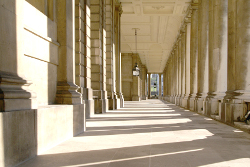 The Criminal Court System of the United Kingdom is widely regarded as being one of the most complicated in the world. The main reason for this is that it was not designed all in one go, but rather it expanded, adapted and developed over the course of more than 1,000 years. To further complicate matters, the four individual nations which make up the United Kingdom have 3 different legal systems between them, meaning that there are 3 different criminal justice systems operating within the borders of one country. For now, we will only focus on the system which is in place in England and Wales.
The Criminal Court System of the United Kingdom is widely regarded as being one of the most complicated in the world. The main reason for this is that it was not designed all in one go, but rather it expanded, adapted and developed over the course of more than 1,000 years. To further complicate matters, the four individual nations which make up the United Kingdom have 3 different legal systems between them, meaning that there are 3 different criminal justice systems operating within the borders of one country. For now, we will only focus on the system which is in place in England and Wales.
Criminal cases are dealt with in different ways depending on the severity and nature of the offence. Most criminal cases will start off in the Magistrates’ Court. If the offence is deemed serious enough or if the case is particularly complicated, it will be sent to the Crown Court. Any appeal generated from Crown Court proceedings will be taken to the High Court, and in rare circumstances these cases will be escalated to the Court of Appeal or to the Supreme Court (which is the new name for The House of Lords).
The Magistrates’ Courts are organised locally, and handle low-profile cases without a jury. They are also where most cases of Family Law take place, where there are no accusations of criminality. Magistrates’ Courts hold the trials of non-indictable offences. If a crime is indictable, the trial will be held in one of the Crown Courts instead. In criminal cases, the Magistrates’ Courts only hear a summary of the events which have taken place. The only decision made by a judge in a Magistrates’ Court during a criminal case is whether the defendant is to be allowed to leave on bail or if they will be remanded in police custody until their trial in the Crown Court. If an appeal is made against the ruling of a Crown Court judge, the trial will be escalated to the High Court.
The Crown Court is housed in 92 different locations across England and Wales, divided into seven different regions. The Crown Court is where defendants are trialed by jury and where sentences are given out. Almost all of the trials which take place at the Crown Courts will have been referred to them from the Magistrates’ Courts.
The Old Bailey, an historical legal landmark within the UK, is the Central Crown Court, but traditionally only hosts trials from within the Greater London area. It was named as the Central Crown Court back in 1834, and has held this title ever since. Only in exceptional circumstances will a case from outside this area be taken to the Old Bailey.
In 1856, public outrage broke out following accusations that a doctor in Staffordshire was poisoning his patients. In response to public fear that it was not safe to try him for his crimes in his local Crown Court, the Central Criminal Court Act was passed in 1856 to ensure that his trial could be held in the Old Bailey instead. Public galleries are open to anyone here, just as they are in any other criminal court in England and Wales. The current building which houses the Central Crown Court and which is known today as the Old Bailey is on the site of the medieval Newgate Gaol building; the actual building was only built in 1902.
The Criminal Court Structure of England and Wales is by no means something that you will get your head around in an afternoon. There are complicated paths which a case will take on its way through the legal system, which will largely depend on the exact nature of the case. There are plenty of diagrams and maps of the system available to help you get your head around it, but people tend to find that they understand it much better once they have gained some professional experience in the legal sector and can apply the knowledge that they have acquired in a more practical sense. This is one of the many aspects of the British court system you will learn through your studies with The Institute of Legal Secretaries and PAs.

